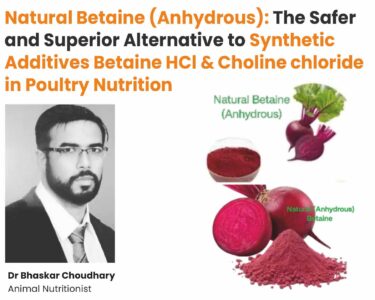The Heat is on: Rethinking EC Broiler House Designs in a Warming World

Mr. Naresh Ravi, Project & Development Manager,
KP Asli Sdn. Bhd, Malaysia I Poultry Enthusiast I WPSA Member
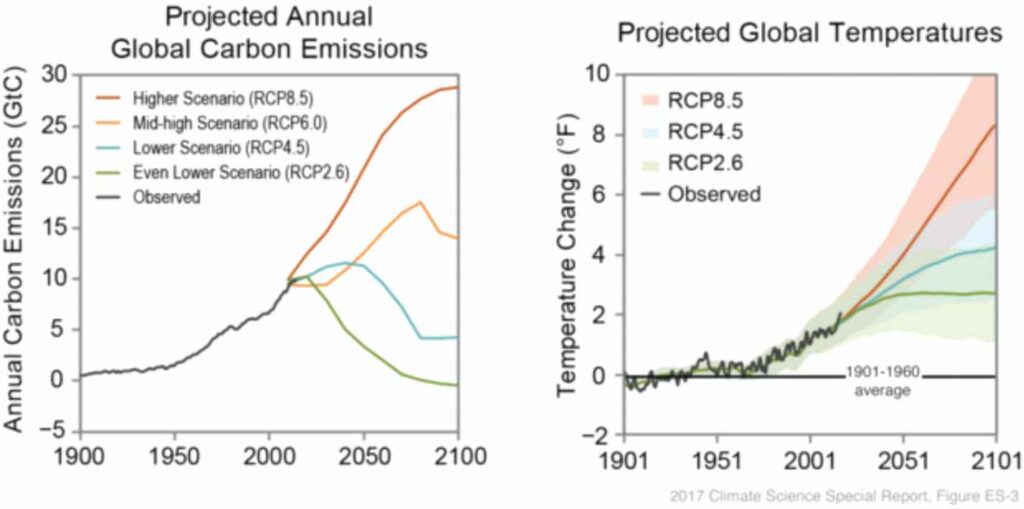
Figure 1.0- (left) Imagined paths of how much carbon we might release this century based on different choices about energy and how economies grow. (right) Predicted rises in temperature compared to the average from 1901-1960, based on which carbon release path we end up on. Image by Katharine Hayhoe, from the 2017 Climate Science Special Report by the U.S. Global Change Research Program.
The increasing menace of climate change profoundly challenges the resilience of environmentally controlled (EC) broiler houses—infrastructures that are precisely built to create an ideal environment for poultry growth. As we gaze into what lies ahead, apprehensions intensify regarding the ability of this EC broiler houses’ to weather the looming climatic challenges catalysed by escalating global temperatures. This year’s record-breaking average global temperatures, such as the unprecedented 17.01°C experienced on July 3, illuminate the reality of this threat —’ . Further, predictive climate models offer robust projections, foretelling a future dominated by more frequent and intense heatwaves if annual carbon emission keeps on increasing as shown in figure 1.0.
In this article, delve into practical strategies to minimize external heat entry, from roofing choices to sidewall materials, ensuring optimal poultry health even in adverse conditions. Additionally, we explore the techniques to efficiently remove internal heat and cool incoming air, a critical aspect as broiler size increases in regions like China and India. By journey’s end, you’ll be equipped with a robust understanding of the pressing need for climate-resilient broiler houses and the solutions available to usher in a new era of poultry farming.
1. Strategies to Reduce Heat Penetration in EC Broiler Houses
Heat mainly enters chicken houses in two ways: through radiation and conduction. Radiative heat involves the absorption of electromagnetic waves. A broiler house with a dark roof or sidewalls absorbs more radiant energy than one with lighter shades. Over time, this can increase internal temperatures, stressing birds and affecting growth rates.
Conduction happens when heat moves through a material due to temperature differences. For example, on hot days, a metal-roofed broiler house can get hot externally, transferring this heat inside and jeopardizing bird comfort and health.
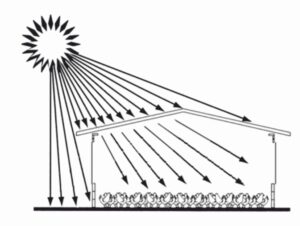
Figure 1.1- Majority of the heat entering the house via radiation. Image by https://ssl.acesag.auburn.edu/poultryventilation/documents/InsulationPVP.pdf
– Roofing: The roof accounts for approximately 70% of the heat entering a broiler house. Choosing the right roofing material is vital. Insulated roofing can minimize solar heat on warm days, benefiting the birds. The efficiency of insulation is rated by its R-value, with higher values indicating better insulation. A commonly used option is 25mm of PU (polyurethane) roofing with an R-value of 6. If you opt for a non-insulated roof, adding an insulating layer in the ceilings can help. However, EC broiler house without any roof insulation or ceiling insulation puts tremendous pressure to the ventilation system as more heat enters the house. For example, a PU roof can maintain internal temperatures around 33.3°C, a notable improvement of 10% from 37.2°C with a non-insulated roof.
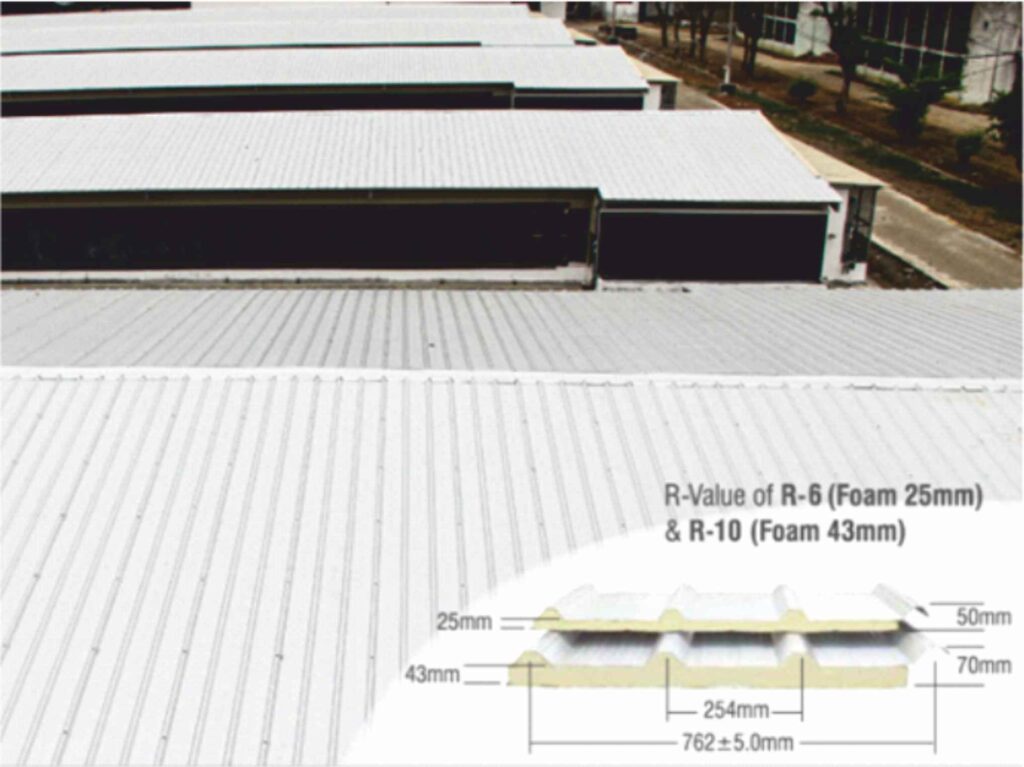
Figure 1.2- Example of PU roofing used in poultry farm.
Image by https://agro-house.astino.com.my/astino-swine-structure/
– Sidewalls: Account for the remaining 30% of heat entering the house.
Curtain: While curtain sidewalls are popular due to their cost-effectiveness and flexibility during emergencies, their insulation properties are limited (R-value= 1.5). For instance, during hot summer days, side curtains can let in a lot of heat, which may require additional ventilations to maintain the right temperature for the birds.
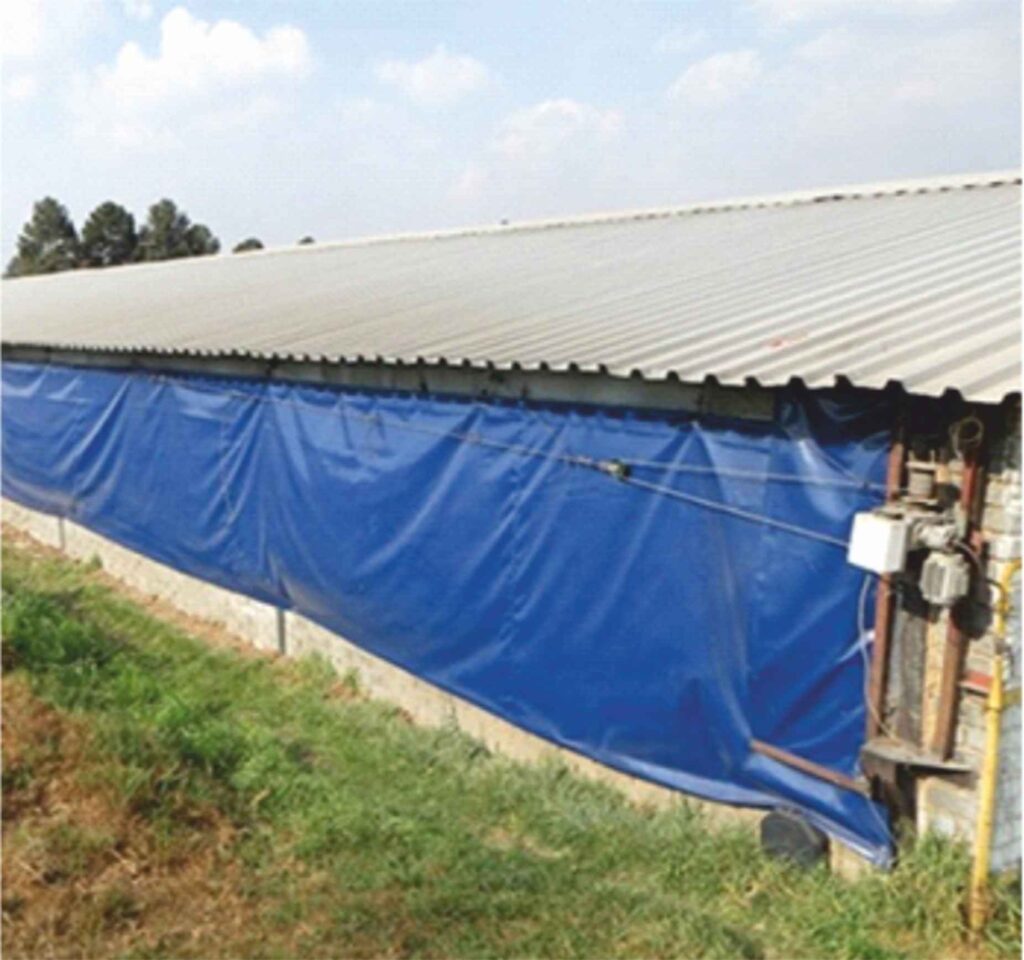
Figure 1.3- Example of curtain sided EC broiler house.
Image credit: https://www.taimeichina.com/pid18255954/Poultry-House-Curtain-Poultry-Side-Curtain.htm
Insulated side wall: Besides that, traditional fiberglass batt (R -Value 3.2) side wall insulation offers cost-effectiveness and fire resistance but may settle over time and is susceptible to moisture damage. Modern Spray Foam (R -Value 7.0) insulation ensures comprehensive coverage and acts as a moisture barrier, especially in its closed-cell variant. However, it can be more expensive and might emit VOCs. Structural Insulated Panels (R -Value 4.0) are pre-fabricated units that speed up construction and reduce thermal bridging, though they can be pricier and challenging to modify post-installation.
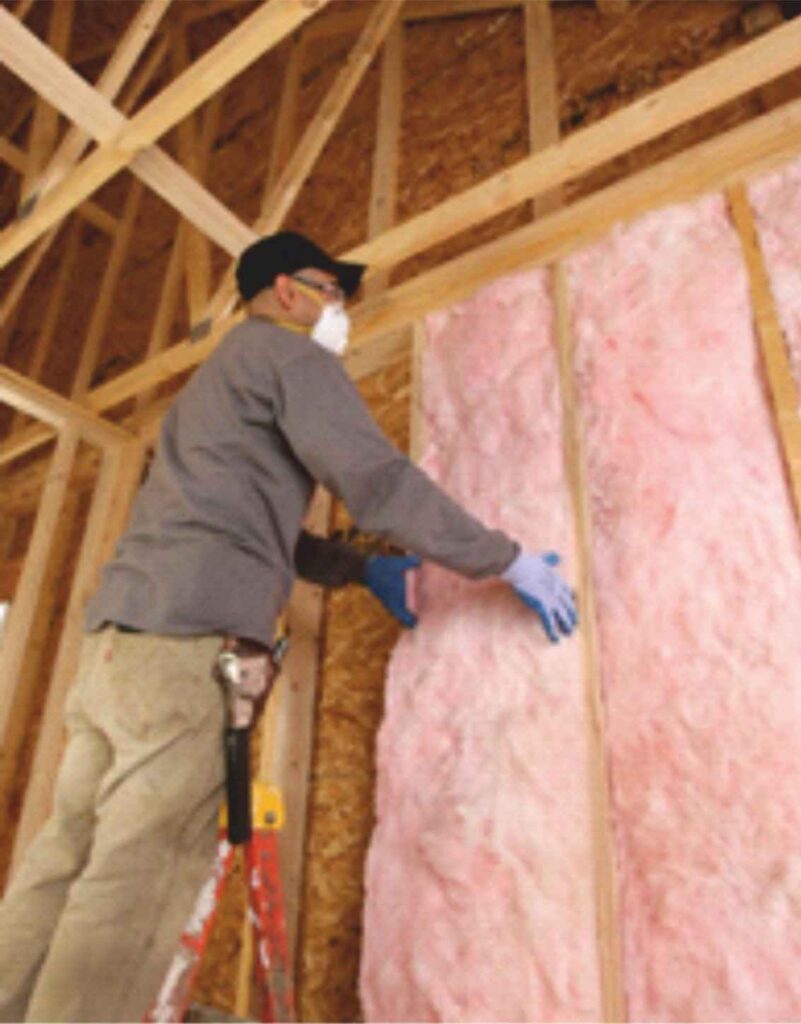
Figure 1.4 Fiber glass batt insulation.
Image credit: https://www.silvercote.com/products-and-systems/ag-by-silvercote/ag-for-chickens/
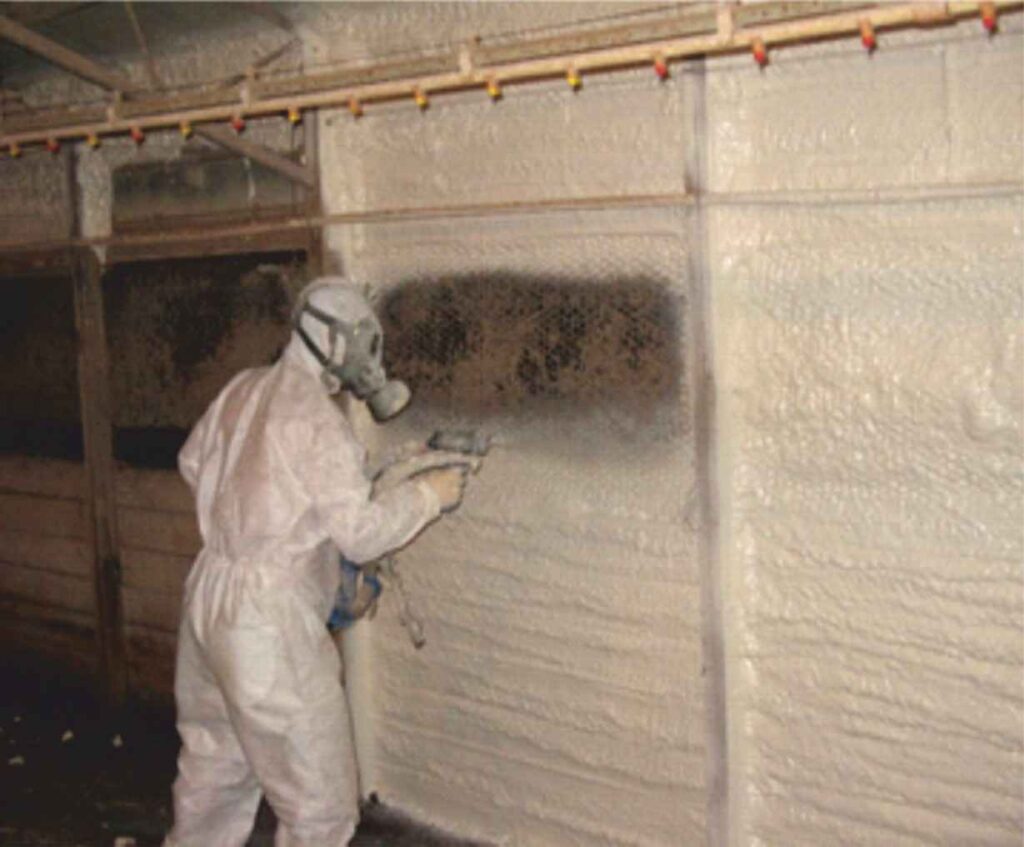
Figure 1.5 Spray foam insulation.
Image credit: https://www.agseal.com/commercial-spray-foam-insulation-products/
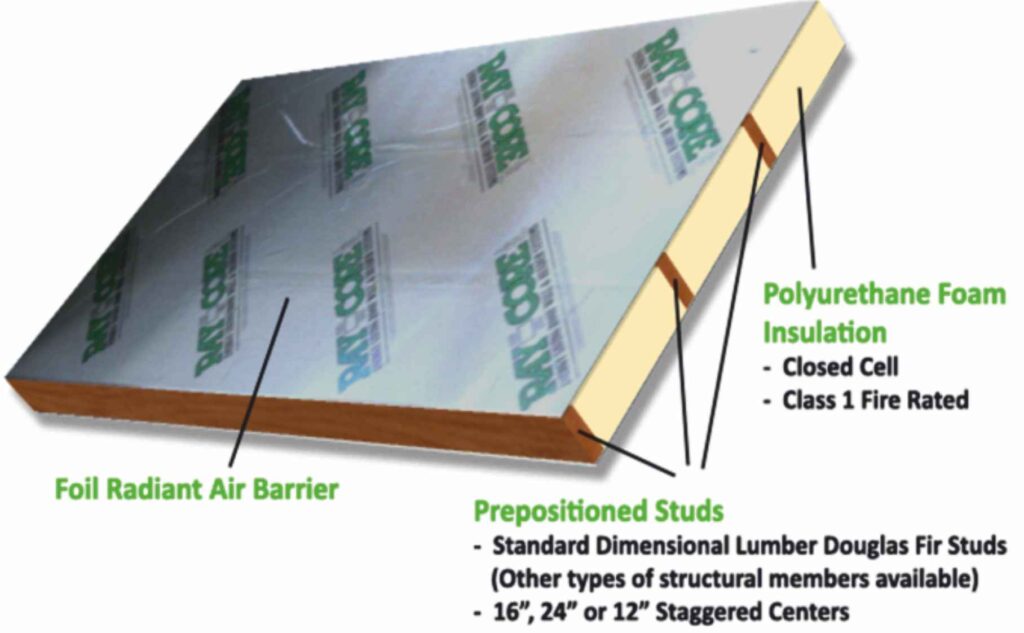
Figure 1.6 Structural Insulated Panels (SIPs).
Image credit: https://raycore.com/sips-structural-insulated-panels/
Brick wall : Bricks, including hollow bricks (R-Value 1.1), are a traditional and durable option for side walls. Hollow bricks have empty spaces within them, providing some insulation. While they are not as efficient as modern insulation materials, they offer long-lasting structural integrity. For instance, in areas prone to extreme weather conditions, hollow bricks can withstand the elements and contribute to temperature regulation inside the broiler house.
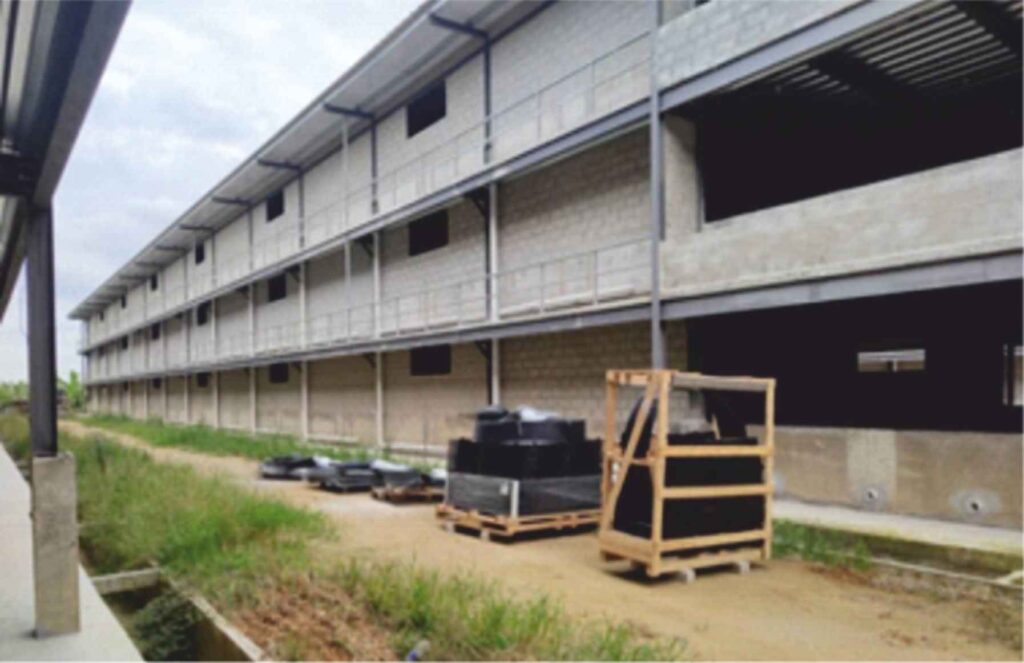
Figure 1.7 Brick wall EC Broiler House
Image credit: Syarikat Sin Long Heng Breeding farm Sdn.Bhd
2. Optimizing Internal Heat Removal
The EC Broiler house gets heat mainly from two aspects: the heat from outside environment which is about 10% and the chickens themselves produce 90% of the heat inside the house. After stopping as much outside heat as possible, we need to get rid of the heat inside. We can do this with good ventilation, like having enough fans capacity. If we don’t have enough fans, it can get too hot inside, even hotter than outside! This can make the chickens very uncomfortable. Ideally, the back of the house shouldn’t be more than 3°C hotter than the front. If it is, then the fans capacity or number of fans are not enough. Currently, our goal is to achieve a wind speed of 3 m/s inside the chicken house, as this will expedite heat removal and provide a wind chill effect for the chickens. However, will 3 m/s be sufficient in the foreseeable future?
In the Asia-Pacific region, there used to be a preference for smaller chickens, with many weighing under two kilograms. However, there’s a trend towards larger birds, especially in China and India. As countries improve disease control and purchasing power, they’re choosing to raise bigger chickens because it’s more efficient. But with bigger chickens and hotter weather, we might need even higher wind speed in the future .
3. Efficient Cooling of the Inflowing Air
Once the challenges of heat entering the chicken house and the removal of internal heat are tackled, it’s crucial to focus on cooling the incoming air. This task is carried out with the help of cooling pads. The farmer should select a cooling pad size that matches the house’s needs, it ensures a wind speed of the cooling pad is around 1.5 to 1.7 m/s to ensure optimum cooling efficiency which is about 75% to 80%.
For optimal pad cooling, it’s crucial to align the total pad area with the fan capacity. This ensures desired cooling efficiency and prevents exceeding a static pressure of 0.10 inches. A frequent error in cooling pad installations is insufficient pad area, leading to high static pressure and inadequate fan performance and cooling.
The true power of the cooling pad lies in its combined effect with tunnel ventilation. The goal is to reduce the incoming hot air to a point where, combined with the wind-chill from tunnel ventilation, the chicken feels as though they’re experiencing temperatures close to 21°C. For instance, if outside air is 35°C and the cooling pad reduces it by about 6.5°C, and tunnel ventilation provides an “effective temperature” drop of another 5.5°C, the chicken would perceive the temperature to be around 23°C .
Diving deeper, let’s not forget that all cooling pads aren’t made equal. A cooling pad made of paper might absorb and release moisture differently than one made of plastic. It’s like having two different brands of air conditioners; each might need its own settings to work best. So, for a farmer, understanding the type of cooling pad in use is essential to get the best cooling results and keep the birds comfortable.
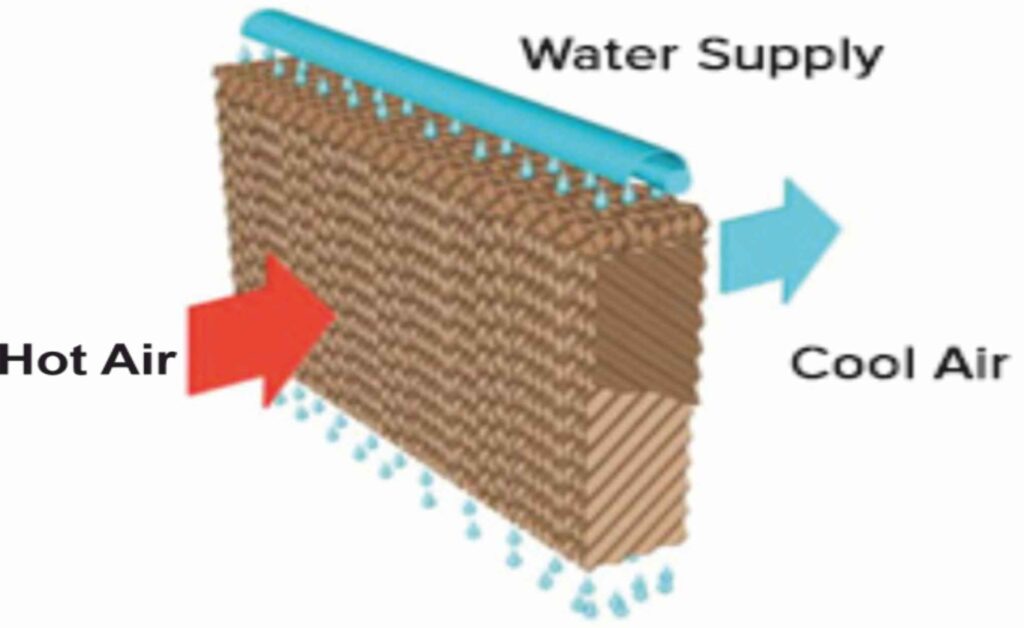
Figure 1.8- The mechanism of reducing the air that entering the EC chicken house with evaporative cooling pad
Conclusion
The events of 2023 emphasize the need for advanced designs to face rising global temperatures. By grasping heat dynamics and selecting the right materials, we can ensure the health of larger Broiler populations, especially in fast-changing regions like China and India. Adapting to climate change is crucial for the poultry industry’s sustainability.
References are available on request.




